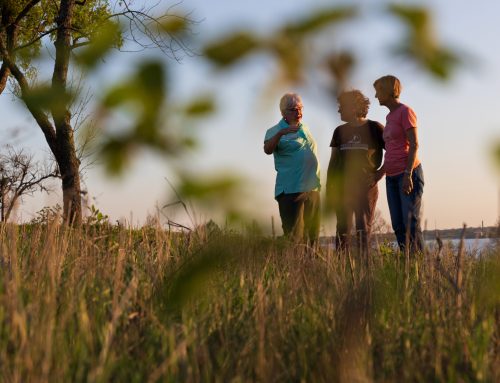White Rock Lake is a year-round favorite for picnicking, jogging, biking, sailing, walking – or just “reflecting”. A recent discussion in our office led to reminiscing about the “early days” of the lake, which was completed in 1911 as the City’s fresh-water source. To learn more about the lake, talk with East Dallas, Lakewood and Casa Linda residents who “remember when,” or ask for Reminiscences: A Glimpse of Old East Dallas at the Lakewood Branch Library.
Swimming at White Rock
“It was about 1934,” Bryce Headrick says, “when I was working at the Baker Hotel. We’d take off after lunch at Vic’s and go swimming in front of the bathhouse. There was a chain-link fence that ran along both sides of the building and down into the water, where a swimming area was marked off. We paid 25 cents to go swimming, which probably included the price of a swimsuit and towel rental.”
The bath house and beach were established in the 1920s and hosted numerous family outings until at-home swimming pools became popular. Today, the bathhouse is one of the City’s two multi-cultural centers.
Cabins and Boat-houses
“There used to be quite a few cabins and private boat-houses on the lake,” Madeline Boedeker says.
Leases of 25-by-100-foot lots were available for fishing shacks, boat-houses and cabins for those who enjoyed being “way out in the country”. The practice was discontinued when the numerous leases began to restrict public use of the lake.
The structures were removed during a late 1930s beautification program led by the Civilian Conservation Corps (CCC), which operated a camp at Winfrey Point.
The CCC and POWs
“During World War II,” Joe Grubbs says, “prisoners of war were housed in barracks-type buildings that had been used by the CCC.”
During the Great Depression, the CCC was established as part of President Franklin Roosevelt’s New Deal. The White Rock corps was comprised of about 250 unemployed men, ages 18 to 25, who tackled conservation work at the lake and park.
As the country prepared for war, the CCC buildings were used as a military boot camp. During the war, prisoners (reportedly from Rommel’s Afrika Korps) were housed at the camp. The first group of 403 German POWs came to Dallas Nov. 20, 1944, to work the night shift at the Dallas Regional Quartermaster and Repair Shop at Fair Park, where they repaired clothing and equipment.





